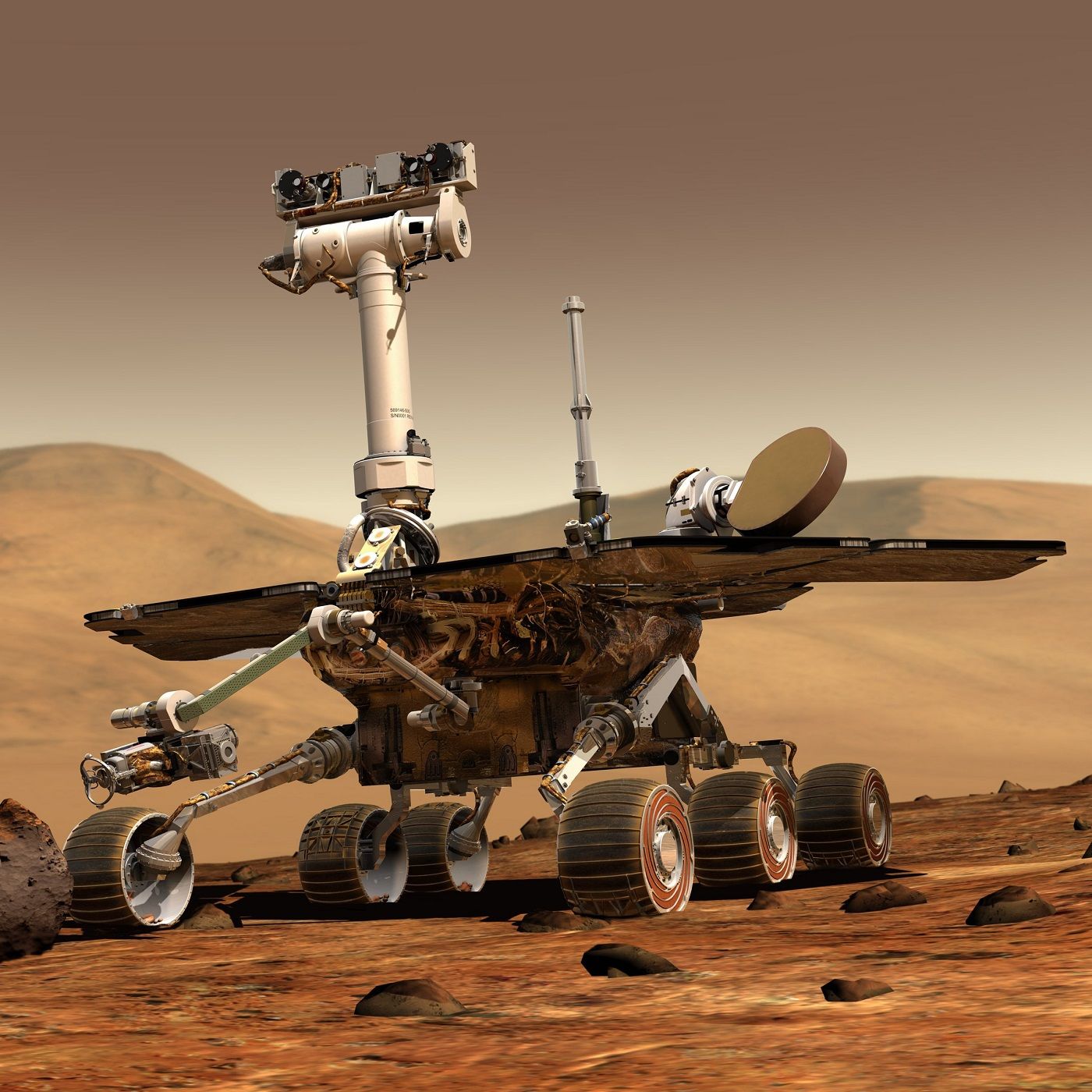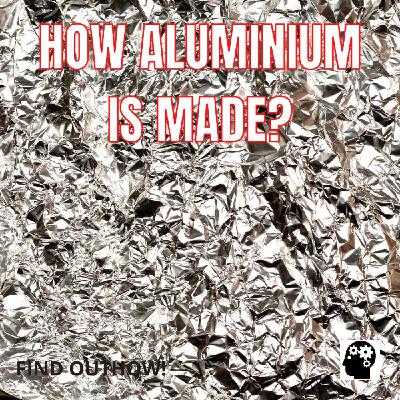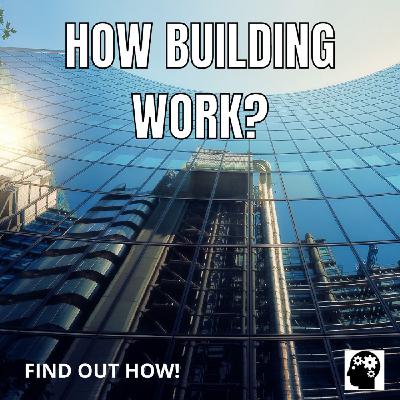Discover The Power of Technological Advances
The Power of Technological Advances

The Power of Technological Advances
Author: Sergio Suárez Benítez
Subscribed: 0Played: 0Subscribe
Share
© Sergio Suárez Benítez
Description
Unveiling the Transformative Power of Technological Advances: Changing the World
Throughout history, technological advances have shaped the course of human civilization, propelling societies forward and revolutionizing the way we live, work, and interact.
From the invention of the wheel to the advent of the internet, each milestone has left an indelible mark on our world.
In this era of rapid innovation, exploring how technological advances can reshape the world offers insights into the potential for positive transformation, as well as the challenges and responsibilities that come with such progress.
Discover in this podcast series, some of the technological advances that make or have made a difference in human civilization...
Throughout history, technological advances have shaped the course of human civilization, propelling societies forward and revolutionizing the way we live, work, and interact.
From the invention of the wheel to the advent of the internet, each milestone has left an indelible mark on our world.
In this era of rapid innovation, exploring how technological advances can reshape the world offers insights into the potential for positive transformation, as well as the challenges and responsibilities that come with such progress.
Discover in this podcast series, some of the technological advances that make or have made a difference in human civilization...
19 Episodes
Reverse
Uncovering Your Computer's RAM: A Quick GuideRandom Access Memory (RAM) plays a critical role in your computer's performance. Knowing how much RAM your system has is crucial for troubleshooting, software compatibility, and potential upgrades. This concise guide will lead you through simple steps to determine your computer's RAM.Check System Properties:Access system properties by right-clicking the Start menu (Windows) or clicking the Apple logo (Mac). In Linux, use the terminal command free -h or cat /proc/meminfo for memory details.Task Manager (Windows) or Activity Monitor (Mac):Open Task Manager (Ctrl + Shift + Esc) on Windows or Activity Monitor on Mac to view RAM information under the "Performance" or "Memory" tab.Command Prompt or PowerShell (Windows):Utilize Command Prompt or PowerShell with commands like systeminfo | find "Total Physical Memory" for Windows.Third-Party Software:Explore third-party applications like CPU-Z or Speccy for detailed hardware insights. BIOS/UEFI:Access BIOS/UEFI during boot by pressing the designated key, reviewing system information for RAM details.Online System Scanner:Use reputable websites offering online system scanners for quick hardware specifications.Physical Examination:For the technically inclined, physically inspect RAM modules inside your computer case for specific details.Conclusion:Understanding your computer's RAM is essential for optimal performance and informed decision-making. These methods offer quick ways to ascertain your system's RAM capacity. Regular checks empower you to enhance your computing experience and address potential upgrade needs.
The advantages of green hydrogen as a fuel are far-reaching and multifaceted. From environmental sustainability and economic growth to technological innovation and international collaboration, green hydrogen represents a catalyst for positive change.As we stand on the precipice of a pivotal energy transition, the embrace of green hydrogen marks a transformative journey towards a cleaner, more prosperous, and harmonious world...Discover more in this podcast...
Technological advances have consistently demonstrated their transformative power, changing the way we live, work, and relate to each other.As we embrace the promise of innovation, it's essential to navigate the ethical, social, and environmental dimensions of progress. Responsible stewardship of technology requires thoughtful consideration, collaboration, and an unwavering commitment to harnessing its potential for the betterment of humanity.With each leap forward, we stand at the threshold of a new world shaped by our collective ingenuity and the boundless potential of technological advancement...Discover the value of technologies now, in the past and in the future in our podcasts...
Copper is a soft, shiny, reddish-brown metal that is known for being a good conductor of heat and electricity. It is one of the most important metals in the metallurgical industry.Copper is a metal widely used in the manufacture of cables, power lines, coins, keys, musical instruments (metals), mobile phones, jewelry, among others.Likewise, copper is an important element as part of our diet. However, in high concentrations it can become toxic to humans and the environment. Among the foods that have a high copper content are liver, nuts and vegetables, among others.Find out more in this podcast.
Something fundamental that we must know is that both soaps and detergents have the same alkaline base, the difference is that soaps are made from animal or vegetable fats, while detergents are made from synthetic substances, that is, That is why "soap" is not the same as "detergent" regardless of whether it is solid, powder or liquid.Soap is the result of the chemical reaction between an alkali (sodium or potassium hydroxide) and a fatty acid such as olive oil, coconut oil, etc. This reaction is called saponification. This combination is soluble in water and due to its detersive properties, it is used to wash and disinfect. Depending on the use for which it is intended, other additives of natural origin such as dyes, aromas, essential oils, herbs, etc. can be added.On the other hand, the detergent is a mixture of various synthetic substances, many of them derived from petroleum, which have the chemical property of dissolving dirt.Find out more in this podcast.
Bridge construction process. Building:- Start building.- Soil compaction.- Pour pillars.- Beam placement.- Cover plan.- Railings installed.- Painting and decoration.- Tests.Find out more in this podcast.
The laser rangefinder or distance meter is very easy to use. When pressing a button, it emits a light that we will direct towards some point. After a second press, the light will turn off and on the screen we can read the distance that separates us from that point.Find out more in this podcast.
When shooting outside, we face a number of challenges that simply don't exist indoors or are minimal. One of them is combating the natural elements and wind noise is one of the main culprits in soiling shots.Wind, in all its forms, can be very detrimental to sound recording. However, there are many ways to reduce wind noise when shooting outside, and most of them are cheap, simple, and effective.Find out more about how to avoid wind noise in your recordings.
With the statistics in hand, and although there are misfortunes that leave anyone frozen, anyone could conclude that flying is safe. Even so, aerophobia, or the fear of flying, brings many passengers upside down.Some studies speak that 25% of the population has a fear of flying that can be classified from moderate to severe. If we talk about motor vehicles, cars, the percentage drops to 5%. Face it, if you are given a choice between car and plane, you will choose the car without hesitation. Why?Why do we fear airplanes more than cars? Why do we consider Ebola very dangerous when in fact around us we have more common diseases that put our lives more at risk? It all comes down to one word: psychology ...Find out more in this podcast.
12 best tips and habits that will help you take care of your smartphone, seeking to extend its useful life to the maximum, or at least as much as possible:1.- Use a coverIt sounds like a truism but it is not so much, and in fact it is the best advice that anyone can give you so that a phone remains intact for longer. There are many types, so use whatever you want but use one, because a device that you have in your hand for so long is likely to be dropped or hit at some point.2.- Although it is waterproof, do not get it too wetBy now many of you will already have smartphones with IP6x certification, but be careful because it does not mean that your phone can get wet at will. If one day you have to clean it with water, do it, the same if you are going to use it in the rain, but do not submerge it for no reason because you will almost certainly shorten its useful life.3.- Do not expose your smartphone to high temperaturesAs a general rule, the colder your phone is, the better. Your lithium battery will lose efficiency if it is subjected to high temperatures, and all electronic components suffer more as they heat up. On a sunny day, the kind that even the phone burns, you better not use it.4.- Keep the battery level between 20 and 80 percentTo safeguard the integrity of your battery, it is best not to fully discharge it or always charge it 100%. In fact, phones arrive from the factory with around 40% charge, its optimal level to keep it stable, and the ideal is to always carry it between 20 and 80 percent.5.- Do not use the device while chargingCharging the device raises its temperature, and using it while charging raises it even more. If we know that temperature is the biggest enemy of your battery, it is best not to use the phone while it is charging.6.- Turn off the connections you don't useIf you are not going to use Bluetooth, Wi-Fi or GPS at a certain time, it is best to keep them off. Your phone will use less battery and resources, and it will stay on standby for longer, which helps protect it.7.- Deactivate automatic synchronization for services you don't needAutomatic data synchronization in the background is one of the most resource-consuming functions on your device, both in processing time and in connection to the data network. If you don't need an app to be always alert, turn off its automatic syncing.8.- Do not install applications but you are going to use them, and do not save many filesWe already know that solid memories are very robust and stable, but they have a limited lifespan by time of use and read / write cycles. So, make sure not to save too many files or always occupy the memory almost to the full, save the data on a PC, and if you haven't used an app in the last 3 months, you may not need it installed ...9.- Do not use apps to clean your smartphoneThese applications consume resources, slow down the smartphone and generally get along quite badly with the native Android resource manager. Do not use them, they are not necessary because Android already has a manager, and if you need to free up memory space, it is best that you spend half an hour eliminating what you do not need.10.- Do not use _'task killers'_ or apps to close processesExtensible to the applications that clean your smartphone, we can speak of the 'task killers', those apps that are dedicated to killing applications and processes without order or consensus with the native Android manager, multiplying the expenditure on resources when the apps that have been reopened closed ... If you can avoid these types of apps, do it.11.- Do not continually close your applicationsIf you are going to use an app every ten minutes, it is best to keep it loaded in memory. The Android manager will keep it in an ‘Idle’ state, inactive, but it will not need to be fully charged when you open it again, saving resources and energy as well as working much more fluidly.12.- Use a lightweight _launcher_ and don't configure too many 'widgets'We know that Android is customizable to the millimeter, but if your desktop is too heavy, the phone will slow down and heat up more as it requires more processing capacity to load it. If possible, use lightweight and well-optimized launchers like Nova Launcher, and don't configure too many 'widgets' on your desktop or loading them will consume more resources and energy.
Due to its high thermal conductivity, aluminum is used in kitchen utensils and internal combustion engine pistons. In addition to its use in aluminum foil that we already know. It is an ideal material that is easily molded so it is used in flexible packaging, bottles and easy-open cans.Discover more in this podcast.
The construction of a building is usually made up of different phases or moments. Although they may vary from one project to another, the normal thing is that this process has about five key moments that are the ones that we are going to explain below.First phase. Documentation in order. All the plans, permits, documents and supplementary reports must be closed and have all the pertinent authorizations. This is essential to ensure that the building is carried out with all possible guarantees and that no technical aspect is being improvised. Also to make sure that the construction respects the existing regulations and that there will be no problems later, once all the work has been done. At this point, a budget must also be made with a calculation of all possible expenses. Once all the documents are closed, you can start building. This work begins with the perimeter closure of the work area. Make sure the construction zone is isolated from the public zone.Second stage. Before starting with the foundations, the ground must be examined. It must also be cleaned and excavated. Hence, the top layer of soil is often removed and the fragments are stacked elsewhere nearby, where they will remain until later used. Once all of this has been done and the foundation base has been inspected, it will begin to be covered with material.Third phase. With the foundations already distributed, it is time to assemble the structure. That is, to build the exterior walls, the interior partitions and the roof of the building. Once we have all this, it is usually said that we have the skeleton of the final building and it is time to install the air conditioning of the building. A process that involves: the installation of cladding, roof, tiles, doors and exterior windows. At this point the building has almost everything you need and it only remains to put the skin on it.Fourth phase. It is time for services. That is to say, of the plumbing, the mechanics and the electrical. This phase is where the water pipes, the waste pipes, the water heaters, the air conditioning systems, the ducts, the electrical wiring, the different lighting points, everything necessary for the building count on TV, telephone, audio service; as well as the security cabling. Once all this is installed, it is time for the so-called special services. We refer to the following: elevators, electricity transformers, pumping equipment, industrial exhaust fans, vertical garbage chutes and solar panels. Obviously, not all buildings have so many services, but all of them, if they do, arrive at this time.Fifth phase. The final stage of the building is dedicated to the final details. That is, the following are carried out: the installation and testing of electrical systems, the installation of ceilings, the placement of doors, baseboards, window frames, floor coverings, countertops, placement of the built-in cabinets, tiles in bathrooms and kitchens, appliances, mirrors, lights, taps, and showers. Finally, it is time to paint and it is ready to deliver.
An elevator or lift is a vertical transportation system, designed to move people or objects between the different levels of a building or structure. It is made up of mechanical, electrical and electronic parts that work together to get it started.Discover more in this podcast.
Hot air balloons float in the sky for the same reason that ships float in the sea. A ship floats because it is supported by the water below it: the weight of the ship (pulling down) is exactly offset by the pressure of the water below it (pushing up). A ship does not float perfectly on the surface of the water, but partially sinks in the water depending on its weight. The larger the boat, the greater the area of water under it, the greater the force of the water pressure pushing it upward, and the more weight it can support.Here's another way of looking at it: Generally speaking, an object will float if it is less dense than water (in other words, lighter than an equal volume of water) and will sink if it is denser (heavier than an equivalent volume of water). Water). Imagine a block of lead the size of your arm in a bathtub filled with water.A "arm full of lead" weighs much more than a "arm full of water," so the lead sinks to the bottom of the tub immediately. But a "plastic-filled arm," the plastic arm of a mannequin, for example, floats because it weighs less than the same volume of water.The balloon burner heats the air and makes the air inside the balloon less dense, producing an upward force or lift.1) A hot air balloon stays on the ground (or descends) when the air inside it is too cold. In this case, the weight of the balloon is greater than the elevation.2) When the air inside is a little warmer, the balloon floats at a constant height because the lifting force and the weight are now the same.3) When the air is even hotter, the balloon rises because the lifting force is greater than the weight.A hot air balloon is not like a rubber balloon tied in a knot: it is open at the bottom so air can move in and out. That means that the density of the air in the balloon can change while the inner and outer pressure is essentially the same. Hot air balloons float because the air trapped inside the balloon is heated by a burner, making it less dense than the air outside. As the burner heats the air, it expands and some of the air escapes; that's what makes it less dense. Here's another way of looking at it. You've probably heard people say that heat rises, by which they really mean warm air rises. When you see clouds of dirty gray gas rising from chimneys, it is because the air coming out of them is warmer than the ambient (surrounding) air. If you could wrap a bag around hot air entering the bottom of a fireplace and seal it, the entire bag would shoot up and out the top before moving away and rising into the air. Indeed, you would have made a small hot air balloon!However, the little balloons are not really very useful. If you want to carry a heavy weight at sea, you need a large boat - one that can displace more water can carry more cargo.In exactly the same way, you need a large hot air balloon to lift a large weight, because you need to create more lift with a greater volume of hot gas. Just to lift the weight of a grown man, you would need a balloon of about 4 m in radius with the air inside heated to a temperature of about 120 ° C. That explains why hot air balloons are generally so large.Discover more in this podcast.
The electric motor of a bicycle does not work if the rider does not pedal. Bicycles use a motor to assist pedaling, not to replace it. The most common model is a sensor on the pedals that detects the force made by the rider and helps proportionally. This motor stops automatically when the rider squeezes the brake or reaches a certain speed.Find out more in this podcast.
The physics of bullet shots has little to do with what the cinema tells us.Find out more in this podcast.
The compass is an instrument that serves to orient oneself and that its foundation is based mainly on the property of magnetized needles. Magnetic north is indicated through a magnetized needle, which is slightly different in each area of the planet. It is also different from geographic north.The magnetized needle indicates the direction of the Earth's magnetic field, pointing towards the North Pole and South Pole. As a curious note, it must be said that there are only two areas of the world where it is not useful, at the poles. The reason is the convergence of the lines of force that the Earth's magnetic field has...Discover more in this podcast.
A helicopter is a type of aircraft that is characterized and distinguished because it is supported and is propelled from one or more horizontal rotors. The rotor is made up of two or more blades and is that rotating part of the aircraft that allows the aerodynamic lift of the ship, which is why helicopters are mostly used in isolated areas, or in those in which congestion predominates and in which an airplane could not operate with its characteristics.Find out more in this podcast.
Large aircraft carriers designed to attack, destroy, neutralize or annihilate different targets by striking aircraft, rockets and other types of weapons while supporting combat actions, the transfer of troops, technique and equipment to ensure the command and direction of the forces involved in an operation.Learn more in this podcast.















